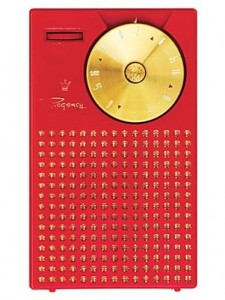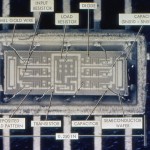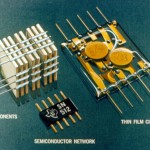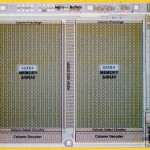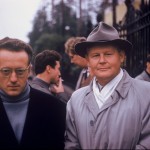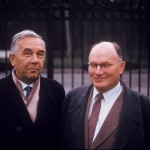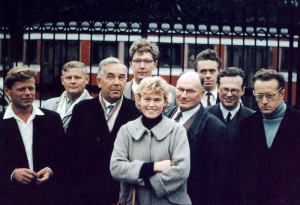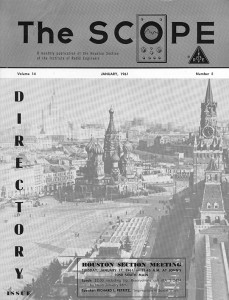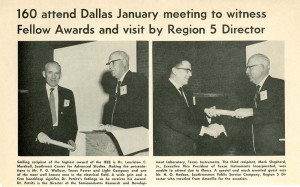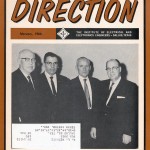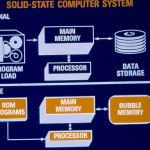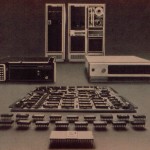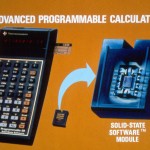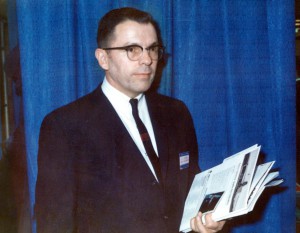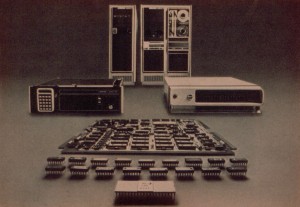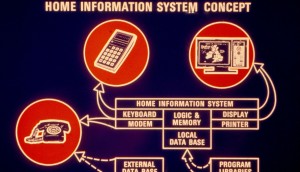Technological Leadership
In 1958 Dr. Petritz was recruited out of academia by what was then an obscure electronics company in Dallas, TX. He was initially hired as the Director of Device Research under Gordon Teal, and served 7 years as Director of Semiconductor Research & Development at Texas Instruments.
Teal — credited with creating the germanium and silicon materials technology underlying commercially viable silicon transistors – had put TI on the microelectronics map and as Director of the Central Research Labs was eager to invest in product development.
In 1954 TI had developed the world’s first small, inexpensive portable radio (marketed by Regency, Inc.) using TI’s germanium transistors. With the first commercial silicon transistors coming off the line in 1954 and TI colleague Jack Kilby’s invention of the Integrated Circuit in 1958, TI began investing heavily in a race to serve (high-margin) military applications and to provide the key for hand-held electronics, calculators and the desk-top computer. 1)FORTUNE, (Time, Inc.) November 1961
Fueling the “Space Race”: a mother of invention
By 1960 Dr. Petritz had developed an international reputation as a published researcher in semiconductors and was on the forefront of integrating lab science into commercially feasible industry solutions. This required a global perspective on both science and commerce. Bridging from science to practical, engineered products made him a leading authority on semiconductor technology and as a representative of TI exposed him to advanced research around the World.
In 1960 the “space race” between US and the Soviets was in full swing. NASA had only recently been established in 1958 for “civilian” purpose. Early computer technology necessary for enabling manned space flight (as well as satellites and missiles) used vacuum tubes. But vacuum tubes were bulky, power hungry and less durable, less reliable and less suitable for NASA and military electronics. TI’s germanium and silicon transistors (and solid-state electronics) usurped the place of vacuum tubes.
TI’s silicon transistors presented obvious advantages over germanium for use in high temperature applications, a key feature in space and defense applications (e.g. the transistors in missiles). Working under sponsorship from the USAF, Wright Patterson Air Force base, a TI team from the SRD (Semiconductor Research & Development) labs designed and built the first computer utilizing monolithic integrated circuits, completed in 1961. Subsequently, the first military systems utilizing integrated circuits (the Improved Minuteman Computer) were designed in 1962 2)Platzek, RC and Kilby, JS, “Minuteman Integrated Circuits – A Study in Combined Operations”, Proc. IEEE, December 1964.. Without manufacturing economies, the Government was the best customer for helping to develop advanced electronics, willing to pay higher prices and tolerate longer development cycles. With production volume, the unit price of semiconductor devices fell, making them feasible for business and consumer electronics.
By the early 60s TI had begun establishing subsidiary operations in Europe. Understanding their lab practices and the scientific advances coming out of Europe and Eastern Europe was of critical concern to both TI and TI’s major customers.
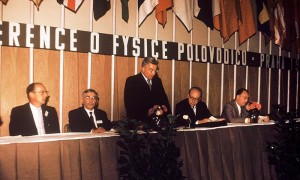
International conference on semiconductor physics, Prague 1960 (Mezina?rodni? konference o fysice polovodic?u? (Praha)
It was with special interest that in 1960 Dr. Petritz was sent to the International Conference on Semiconductor Physics, in Prague.
From there he was invited inside the Soviet Union to meet with Eastern European scientists, tour their labs, and review their thermoelectricity and semiconductor programs.
While there he lectured at five Academy of Science laboratories in Leningrad, Moscow and Warsaw. Some of Dick’s reflections on the trip were captured in presentations made in Texas in 1961. Read the Texins Article (PDF) and IRE Talk:, “Impressions of Soviet Semiconductor Work” (PDF)
Firsts in Integrated Circuits
At TI Petritz provided key leadership at a very sensitive time in the industry’s development. He supervised over 300 technical personnel in his lab and as lab Director, worked closely with his Deputy Director Jack Kilby in product development and commercialization of new technology.
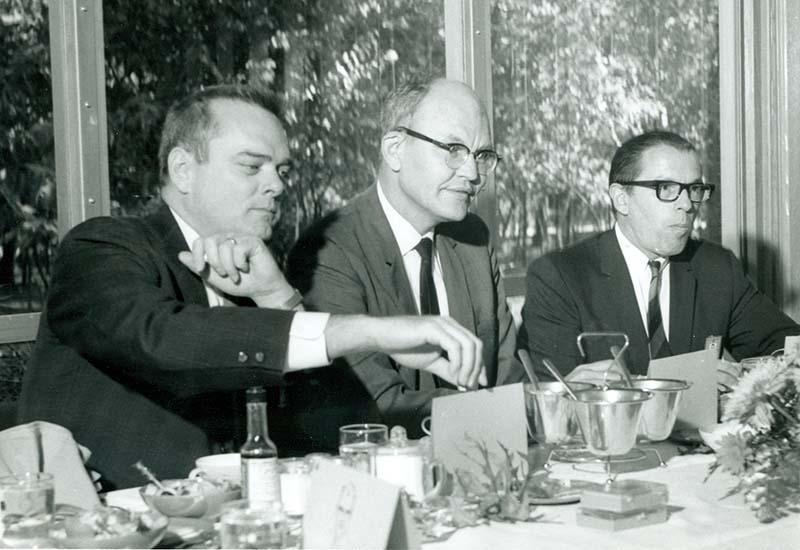
Left to Right: Mark Shepherd, Exec VP; Jack Kilby, Deputy Director – SRDL; Richard Petritz, Director – SRDL
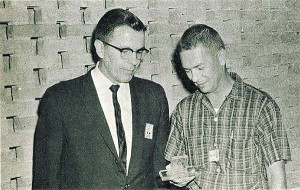
Mort Jones (shown right, above with Dr. Petritz, head of SRDL) set up the world’s first transistor production line- for S-C in 1954 – and holds one of the first transistors ever produced.
Contrasting his days as an academic researcher — where the end of research was new knowledge — it was Dr. Petritz’s job to move invention out of prototype and on to the production floor.
Dr. Petritz and his team were responsible for developing TI’s entry into MOS integrated circuits and developed TI’s line of bipolar IC’s (the Series 7400 and 5400), the industry’s most widely used bipolar ICs over a 30 year span.
During Dr. Petritz’s tenure Texas Instruments achieved many “Firsts” in the commercial deployment of the Integrated Circuit.
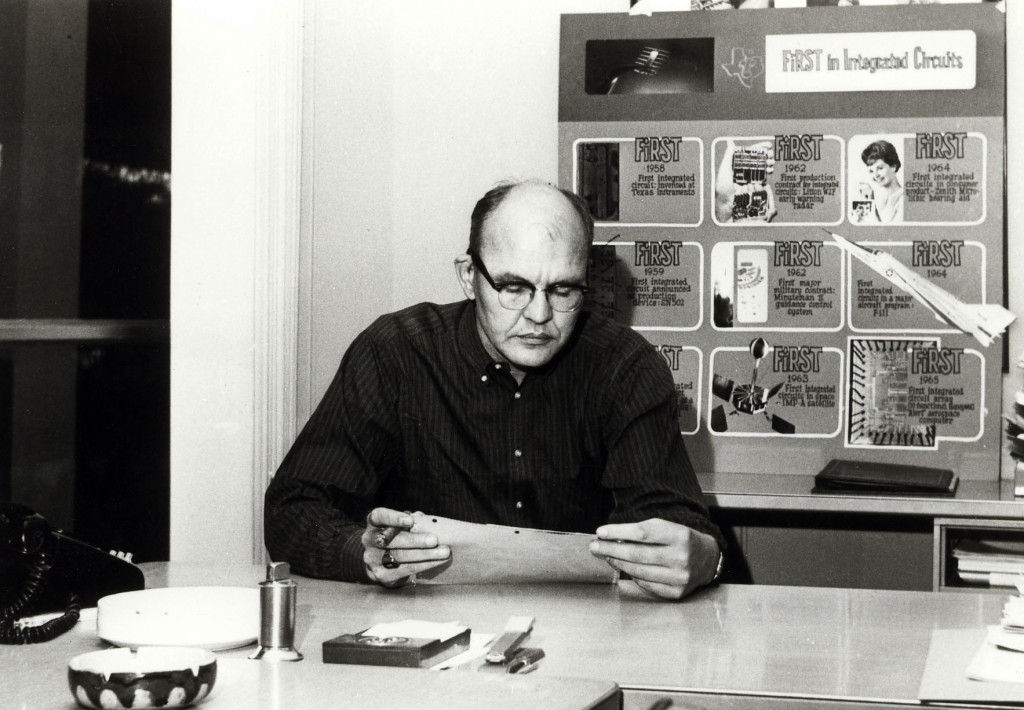
Jack Kilby, Integrated Circuit Inventor; winner of the Nobel Prize in physics, June 25, 1970. Image courtesy of DeGolyer Library, Southern Methodist University, Texas Instruments records
Technology Strategist
In the early 60’s Texas Instruments developed into a major player in semiconductors and microelectronics. And Dick himself had grown from a theoretical physicist and lab scientist to a manager of scientist – engineers and R&D projects. Synthesizing science, product engineering, and market needs analysis, Dr. Petritz made the move from “doing” science to the management of highly talented people and the commercialization process.
Audio Interview: R&D Manager
As Dick’s mentor Gordon Teal put it,
“the job was to establish the environment for and to direct innovation, in contrast to performing personal invention” 3)Teal, GK, “Roots of Creative Research”, IDEA, V. 11 (1), Spring 1967. , and “to be successful in selecting people and programs of research to create new businesses” . 4)Teal, GK, “Patterns of Creative Action in a Research Career”, Speech transcript presentation at the American Academy of Achievement Symposium, June, 1967.
This experience and combined acumen developed Dick into a product strategist for the broad future of microelectronics and information-age products. It also set the stage for his future endeavors as both venture capitalist and entrepreneur. Teal’s guidance became Dick’s modus operandi for much of his career.
For his contributions to the microelectronics industry Dr. Petritz was cited as a Fellow by the Texas Academy of Science in December 1961 and received the highest IEEE “Fellow” Award in 1964. Direction Article (PDF)
Iconic works of “High-Technology”
By the late 1960’s Dr. Petritz had become a leading proponent of large scale integration (LSI) technology and the future of microcomputing. During an interview with Electronic News (Jan. 30, 1967), Dick explained that a prototype of a digital computer designed entirely around LSI techniques was near assembly. Texins interview with RLP on LSI (PDF)
At issue was both the performance enhancements AND the cost reductions necessary to boost sales. Achieving reliable manufacturing yield with 10:1 cost advantages was the problem to be solved within Dick’s SRD labs. These were NOT trivial problems, for technology, manufacturing or sales.
As Gordon Moore (co-founder of Intel Corp. in 1968) reflected on it,
“You might think integrated circuits were obvious solutions or immediately accepted. This was not the case. Bob Noyce (Intel co-founder) made another one of his major contributions to the industry: he said we’ll sell you the circuit for less than you could buy the transistors and resistors to build it yourself. The solution the semiconductor industry developed was that whenever you have a (sales) problem, you lower the price and let the elasticity of the market bail you out”. 5)Moore, G, “2010 International Solid-State Circuits Conference – 50th Anniversary”, Plenary Speaker Transcript.
TI’s leadership in integrated circuits opened the doors for expansive commercial success. Those technical advances in the SRD Labs quickly made their way into consumer electronics.
In 1967 TI employees Jack Kilby, Jerry Merryman and James Van Tassel were credited with inventing the handheld calculator, bringing the integrated circuit further into the commercial market. 6) Goldstein, A and Bajaj, V, “Dallas’ father of microchip wins Nobel Prize”, The Dallas Morning News, Oct. 11, 2000
Balancing innovation, cost structure and value pricing was a leadership strategy many in the semiconductor industry had undertaken, as was first demonstrated so well by TI executives in the early 60s.
At the 1967 International Electron Devices Meeting (Washington, Oct. 18-20) Dick chaired the Technical Committee. As Panel Moderator with fellow luminaries of LSI technology, they contemplated the wide-ranging implications of LSI on the industry.
Int’l Electron Device Parley To Air LSI Packaging, Profit (PDF)
As a speaker and Chairman of the Technical Program for the 1968 International Solid-State Circuits Conference (Philadelphia, Feb. 14-16, 1968) over 2,000 fellow scientists were addressed with technological breakthroughs and new directions in the areas of consumer electronics and the broad base of the solid state effort. Details of the active memory system in TI’s (new LSI) computer and techniques of manufacture were also presented to the public for the first time.
Later that same year Dick was responsible for organizing the technical sessions for the March, 1968 IEEE Convention. As the Technical Programs Chairman and moderator for LSI Technology and its application to Computer Systems, Dick addressed a convention assembly of 19,000 IEEE members. It was there that Petritz and colleague Gordon Moore were asked to give a talk and demonstration of Compressed Speech, which proved to be ground-breaking.
A sample of Dr. Petritz’s industry forecast was embodied in his 1967 publications, “Technological Foundations and Future Directions of Large-Scale Integrated Electronics”, and “ Current status of large scale integration technology”, delivered in conjunction with the IEEE 1967 Fall Joint Computer Conference. 7)Richard L. Petritz, “Technological Foundations and Future Directions of Large-Scale Integrated Electronics”, Proceedings – Fall Joint Computer Conference, Keynote Address, 1966. 8) Richard L. Petritz, “Current Status of Large Scale Integration Technology”, IEEE Journal of Solid-State Circuits, Vol. sc-2, No. 4, December 1967. Petritz Paper – Technical Foundations (PDF)
His publications concluded that the broad future for integrated electronics would emerge from the nexus of materials technology – including Integrated Electronic components and integrated circuits – and software technology. By today’s comparison, Petritz 66’ perspective on the future development of LSI and into VLSI proved remarkably accurate.
This work — articulated by Dr. Petritz and reflecting the combined perspective of TI colleagues, such as Gordon Teal, Willis Adcock, Jack Kilby, and Mark Shepherd– formed a basis for what later became referred to in the late 70s as “high-tech” industry; that is, a large array of businesses built around a common denominator: the silicon chip. Narrowly defined, that included makers of semiconductors, microprocessors, most forms of computer hardware and software.
As predicted in the early 60s, integrated electronics enabled not only advances in data processing but spread widely into such industries as telecommunications, medicine, aerospace, advanced manufacturing, robotics and transportation.
References
| ↑1 | FORTUNE, (Time, Inc.) November 1961 |
|---|---|
| ↑2 | Platzek, RC and Kilby, JS, “Minuteman Integrated Circuits – A Study in Combined Operations”, Proc. IEEE, December 1964. |
| ↑3 | Teal, GK, “Roots of Creative Research”, IDEA, V. 11 (1), Spring 1967. |
| ↑4 | Teal, GK, “Patterns of Creative Action in a Research Career”, Speech transcript presentation at the American Academy of Achievement Symposium, June, 1967. |
| ↑5 | Moore, G, “2010 International Solid-State Circuits Conference – 50th Anniversary”, Plenary Speaker Transcript. |
| ↑6 | Goldstein, A and Bajaj, V, “Dallas’ father of microchip wins Nobel Prize”, The Dallas Morning News, Oct. 11, 2000 |
| ↑7 | Richard L. Petritz, “Technological Foundations and Future Directions of Large-Scale Integrated Electronics”, Proceedings – Fall Joint Computer Conference, Keynote Address, 1966. |
| ↑8 | Richard L. Petritz, “Current Status of Large Scale Integration Technology”, IEEE Journal of Solid-State Circuits, Vol. sc-2, No. 4, December 1967. |
